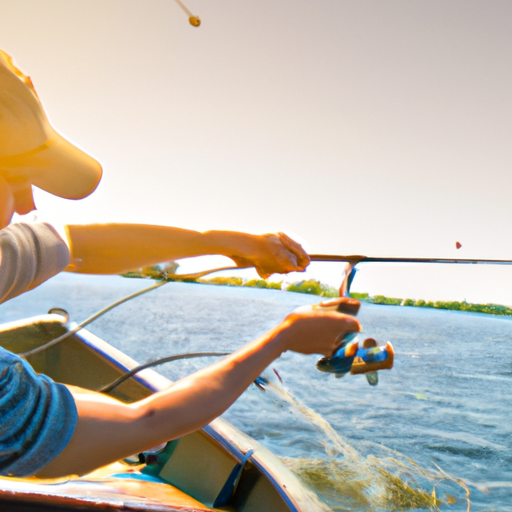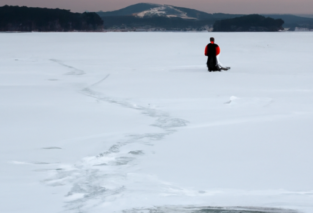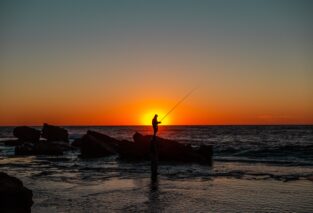Fishing can be a rewarding and relaxing activity, but if you’re just starting out, it can feel overwhelming. That’s why we’ve compiled a list of the top five fishing techniques that every beginner should master. Whether you’re fishing in a freshwater lake or casting your line in the ocean, these techniques will give you the confidence and skills to reel in your next big catch. From basic casting to understanding different bait options, this article will equip you with the knowledge you need to start your fishing journey on the right foot. So grab your rod and get ready to learn the ropes of fishing!
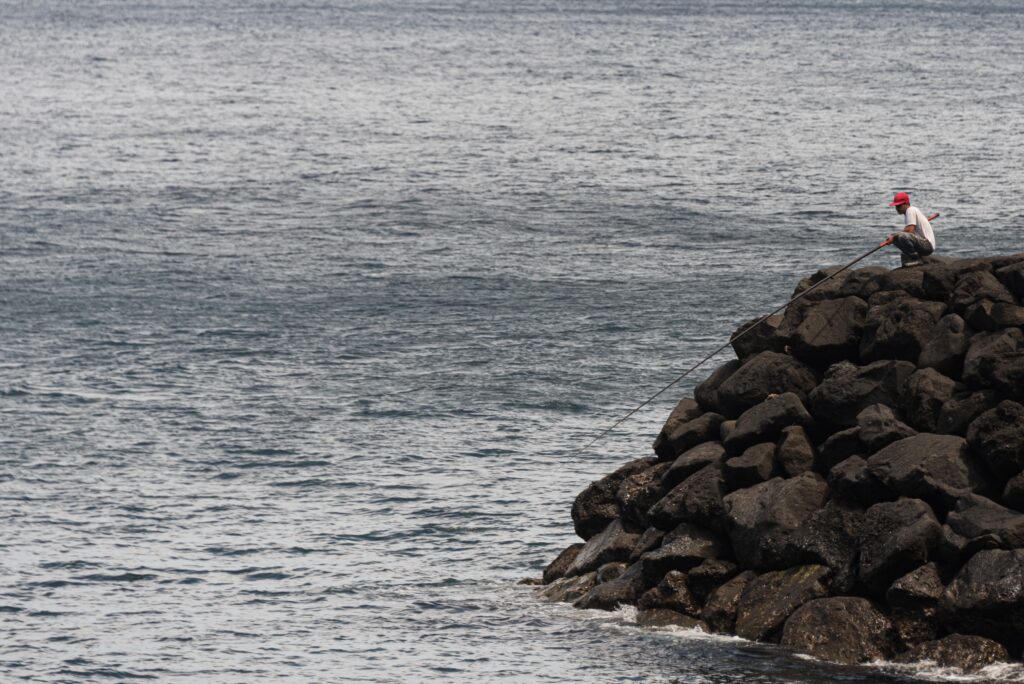
Casting Techniques
When it comes to fishing, casting is a fundamental skill that every angler must master. There are several casting techniques that you can learn, each suited for different fishing situations. Let’s take a look at the most commonly used casting techniques:
Overhead Cast
The overhead cast is the most basic and widely used casting technique. It involves swinging the fishing rod backward and then smoothly bringing it forward in a fluid motion, releasing the line at the right moment to propel the bait or lure towards the target. This technique is versatile and ideal for casting over long distances and in open spaces.
Sidearm Cast
The sidearm cast is employed when you need to cast under low-hanging obstacles or when fishing from a boat with limited overhead clearance. Instead of lifting the rod overhead, you keep it parallel to the water’s surface and bring it back and forth in a sidearm motion. This technique allows for accurate and precise casting in tight spaces.
Roll Cast
The roll cast is particularly useful when you need to cast in tight quarters or when there is limited space behind you for a backcast. It involves sweeping the rod backward and then swiftly rolling it forward, using the weight of the line to propel the lure or bait towards the target. The roll cast requires less room for maneuver and is ideal for fishing in small creeks or around obstacles.
Pitch Cast
The pitch cast is a technique used to cast small distances accurately. It involves dropping the bait or lure directly into the water without any backward motion. To execute a pitch cast, hold the bait or lure in your non-dominant hand and quickly flick your wrist forward, releasing the line at the desired spot. This technique is perfect for fishing in tight spots or when targeting specific areas close to the shore.
Mastering these casting techniques will significantly improve your fishing skills and increase your chances of success on the water.
Knot Tying
Securing your fishing line to your bait or lure is crucial for ensuring a strong connection and preventing the loss of your catch. There are various knot tying techniques, but here are some of the most reliable and widely-used ones:
Improved Clinch Knot
The improved clinch knot is a popular knot used to tie the fishing line to the hook or lure. It is simple to tie and provides excellent strength. To tie the improved clinch knot, pass the fishing line through the eye of the hook or lure. Then, wrap the tag end around the standing line for 5-7 turns. Next, pass the tag end through the loop above the eye of the hook and then through the larger loop formed. Moisten the knot and tighten it by pulling the standing line and the tag end simultaneously.
Palomar Knot
The palomar knot is an incredibly strong and reliable knot. It is commonly used when fishing with braided lines or when targeting larger fish species. To tie the palomar knot, double the fishing line and pass it through the eye of the hook or lure. Tie a simple overhand knot, leaving a loop large enough to pass the hook or lure through. Pass the hook or lure through the loop and moisten the knot. Finally, pull both ends of the line to tighten the knot firmly.
Uni Knot
The uni knot is a versatile and easy-to-tie knot that works well with monofilament, fluorocarbon, and braided lines. It is known for its strength and reliability. To tie the uni knot, pass the fishing line through the eye of the hook or lure and make a loop above it. Hold the loop and make 4-6 wraps around the standing line, passing them through the loop each time. Moisten the knot and tighten it by pulling the standing line and the tag end simultaneously.
By mastering these knot tying techniques, you can ensure your fishing line stays securely attached, maximizing your chances of landing that big catch.
Bait and Lure Selection
Choosing the right bait or lure is essential for enticing fish to bite. Depending on the type of fishing you’re doing and the species you’re targeting, you may opt for live bait fishing or artificial lure fishing.
Live Bait Fishing
Live bait fishing involves using live organisms, such as worms, minnows, or crickets, to attract fish. This method is highly effective as it presents the fish with natural prey, triggering their instinct to strike. When live bait fishing, it’s essential to select bait that is appropriate for your target species and the fishing conditions. Keep your live bait fresh and lively, presenting it in a natural and enticing manner to increase your chances of success.
Artificial Lure Fishing
Artificial lure fishing involves using synthetic lures designed to imitate various types of prey fish. There is a vast array of artificial lures available, including crankbaits, spinnerbaits, jigs, soft plastics, and topwater baits. Choosing the right artificial lure depends on the fish species you’re targeting, the water conditions, and the type of presentation you want to achieve. Artificial lure fishing offers versatility and allows for experimentation with different colors, sizes, and styles to entice fish to strike.
Choosing the Right Bait or Lure
When deciding between live bait and artificial lures, consider factors such as the target species’ feeding habits, the fishing location, and your personal preferences. Some fish species are more likely to bite on live bait, while others show a preference for specific types of artificial lures. Additionally, consider the water conditions and weather patterns, as these factors can influence the effectiveness of certain bait or lure choices. It’s always a good idea to research and gather information about the fish species you’re targeting to make informed decisions when selecting bait or lures.
By understanding the differences between live bait fishing and artificial lure fishing and selecting the appropriate baits or lures, you can optimize your chances of enticing fish and reeling in your next trophy catch.
Hook Setting Techniques
Hook setting is a critical aspect of fishing that determines whether you successfully land a fish or lose it. Different techniques can be employed to set the hook effectively, depending on the fishing situation and the type of fish you’re targeting. Here are three common hook setting techniques:
Strip-Set
The strip-set is a technique often used in fly fishing or when fishing with soft plastic baits. To execute a strip-set, you need to detect a bite or feel a fish on the line. Instead of forcefully jerking the rod, you strip the line by pulling it with your stripping hand, transferring the energy to the hook. This technique is particularly useful for setting the hook when the fish is not aggressively striking and requires a subtle approach.
Crank-Set
The crank-set is employed when fishing with crankbaits, spinnerbaits, or other lures with treble hooks. To execute a crank-set, once you feel a bite, keep reeling in the line while quickly jerking the rod upwards and to the side. This action drives the hooks into the fish’s mouth, setting the hook securely. The crank-set technique is effective for targeting predatory fish that often strike aggressively.
Twitch-Set
The twitch-set is commonly used when fishing with topwater lures or jerkbaits. When you see or feel a strike, give a quick twitch or upward movement to the rod to set the hook. This jerking motion generates a reaction from the fish, causing it to strike again and increase the likelihood of hooking the fish successfully. The twitch-set is effective for enticing bass, pike, or muskies to strike on the water’s surface.
When setting the hook, timing and coordination are crucial. It’s important to react quickly and confidently when you sense a bite or see a fish strike. Practicing these different hook setting techniques and adapting them to various fishing scenarios will enhance your hook-up ratio and improve your overall fishing success.
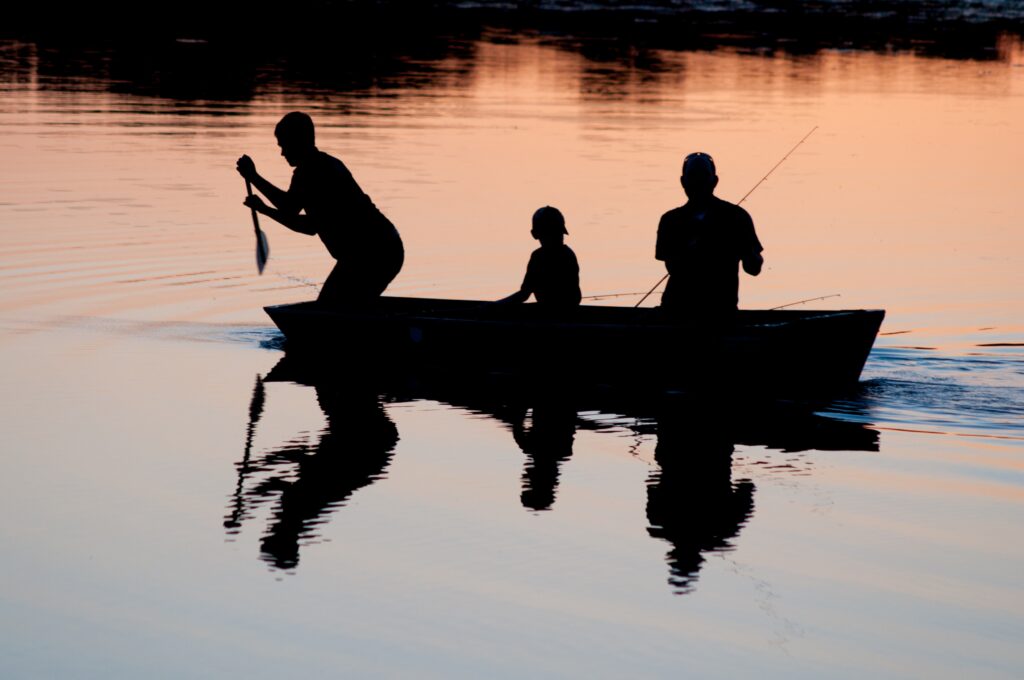
Fish Locating Methods
Finding fish is a crucial aspect of successful fishing. Understanding where fish are likely to be found helps you target the right areas and increase your chances of a fruitful fishing trip. Here are some effective methods for locating fish:
Understanding Water Structure
Understanding the underwater structure is essential for locating fish. Different fish species have specific preferences for habitat, such as shallow water, deep pools, underwater structures like rocks or fallen trees, or vegetation-rich areas. By studying the water’s topography, you can identify potential fish-holding areas and concentrate your efforts accordingly.
Using Fish Finders
Fish finders are electronic devices that use sonar technology to detect fish and underwater structures. They provide valuable information about the water depth, temperature, and the presence of fish. Fish finders can be mounted on boats or used as portable units. Utilizing a fish finder can greatly enhance your ability to locate fish and increase your chances of successful fishing.
Observing Birds and Wildlife
Birds and wildlife can offer valuable clues about fish locations. Many fish species feed on insects or smaller fish that are near the water’s surface. Flocks of diving birds or swooping swallows can indicate the presence of baitfish and predators below. Additionally, observing the behavior of animals like otters, herons, or turtles can give you insight into where fish might be congregating.
Reading Water Conditions
Water conditions play a significant role in fish behavior and movement. Factors such as temperature, oxygen levels, current flow, and clarity can all influence where fish are likely to be found. Warmer water tends to attract fish seeking food or spawning grounds, while colder water may push them to deeper areas. By observing changes in water conditions, you can make informed decisions about where to fish.
Researching Fishing Reports
Fishing reports provide valuable information about recent catches, hotspots, and fishing trends in specific areas. Local tackle shops, fishing forums, or online resources often provide up-to-date reports from experienced anglers. By researching fishing reports, you can gain insights into successful techniques, tackle recommendations, and fish activity patterns, increasing your chances of locating and catching fish.
By combining these fish locating methods and adapt them to different fishing environments, you’ll become more adept at finding fish and maximizing your chances of a successful fishing trip.
Line Management
Proper line management is critical for smooth casting, effective hook sets, and overall fishing success. Here are some essential aspects of line management to consider:
Spooling the Reel
Spooling the reel correctly ensures that the fishing line is properly loaded and feeds smoothly during casting and retrieval. It’s essential to follow the manufacturer’s instructions when spooling a reel. Properly spooled line reduces the risk of backlash, tangling, and loss of casting distance.
Avoiding Line Twist
Line twist can occur when the line is coiled improperly on the reel or when using certain fishing techniques. It can lead to reduced casting distance, increased tangles, and compromised strength. To avoid line twist, make sure the line is wound evenly on the spool, and consider using a swivel or a leader to minimize the line’s twisting action.
Adjusting Drag
The drag system on a fishing reel controls the amount of resistance a fish feels when it takes the bait or lure. Properly adjusting the drag prevents the line from breaking under the force of a fish’s sudden movements. To set the drag, make sure it is tight enough to provide sufficient resistance but not overly tight, as it may cause the line to snap.
Maintaining Line Tension
Maintaining line tension during the retrieval process is crucial for detecting subtle bites and setting the hook effectively. Keeping a slight tension on the line with your fingers or by properly adjusting the reel’s drag allows you to feel even the slightest changes in line movement, improving your ability to detect bites and capitalize on opportunities.
By mastering line management techniques, you can improve your casting distance, reduce tangles, and increase your chances of landing more fish.

Casting Accuracy
Having the ability to cast accurately is essential for presenting your bait or lure precisely where the fish are located. Here are some tips to improve your casting accuracy:
Targeting Specific Spots
When casting, focus on casting to specific spots where you believe fish might be holding. Look for areas with structure, vegetation, or other features that might attract fish. Concentrating your casts on these specific spots increases your chances of enticing fish and increases your accuracy.
Using Casting Aids
Various casting aids are available to help improve casting accuracy. Practice casting targets such as hula hoops or floating rings to refine your accuracy. These aids provide visual targets to aim at and allow you to develop muscle memory and consistency in your casting technique.
Adapting to Different Wind Conditions
Casting accuracy can be affected by wind speed and direction. Practice casting in different wind conditions to adapt your technique accordingly. Casting into the wind requires more power and a higher trajectory, while casting with the wind requires a lower trajectory and precise timing. By understanding how wind affects your casts, you can adjust your technique for greater accuracy.
Improving your casting accuracy takes practice and patience. By implementing these tips and dedicating time to refine your technique, you will become more proficient at placing your bait or lure accurately, increasing your chances of attracting your target fish.
Fishing Safety
While fishing is an enjoyable and relaxing activity, it’s essential to prioritize safety on the water. Here are some key safety measures for a safe fishing experience:
Wearing a Life Jacket
Wearing a properly fitted and US Coast Guard-approved life jacket is crucial, especially when fishing from a boat or in fast-moving or deep water. Even if you are a strong swimmer, unexpected accidents or changing weather conditions can make it difficult to stay afloat. Wearing a life jacket ensures your safety in case of an emergency.
Being Aware of Surroundings
Maintaining awareness of your surroundings is vital for avoiding accidents and ensuring your safety. Keep an eye out for floating debris, other boats, swimmers, or changes in weather. Being aware of your surroundings allows you to react promptly to potential hazards and protect yourself and others.
Handling Hooks Safely
Handling hooks can be dangerous, especially when they are sharp or embedded in fish or other objects. Always handle hooks with caution, using pliers or other tools when necessary. Avoid grabbing or reaching into areas where you cannot see clearly, as there may be hidden hooks or other hazards.
Being Prepared for Weather Changes
Weather conditions can change rapidly, and being prepared is crucial for your safety. Before heading out, check the weather forecast and pack appropriate clothing, sunscreen, and insect repellent. Carry a portable weather radio or a smartphone with weather apps to stay informed about any changes in weather patterns. If inclement weather is approaching, seek shelter immediately to protect yourself from lightning, heavy rain, or strong winds.
By following these fishing safety measures, you can enjoy your time on the water while minimizing risks and ensuring a safe and enjoyable fishing experience.
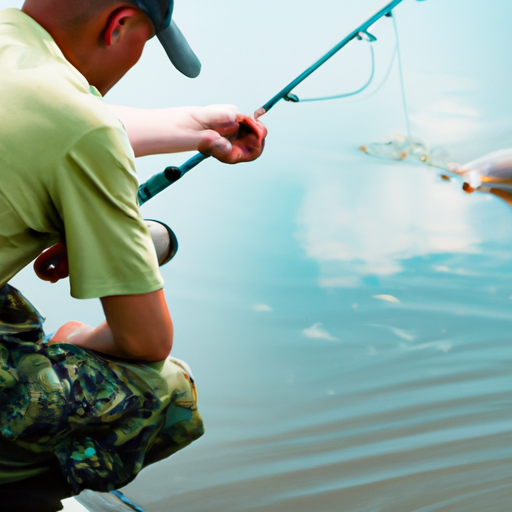
Fish Handling and Release
Practicing proper fish handling techniques is essential for the well-being of the fish and the sustainability of fish populations. Here are some tips for handling and releasing fish responsibly:
Properly Handling Fish
When handling fish, always wet your hands first to minimize removing the fish’s protective mucus layer. This layer helps prevent infections and aids in their ability to swim. Avoid squeezing or putting excessive pressure on the fish, as it can cause internal injuries. Support the fish’s weight horizontally and cradle it gently to prevent any harm or stress.
Using a Landing Net
Using a landing net is an effective way to safely land fish, especially when fishing from a boat or in areas with difficult access. Nets with knotless mesh reduce the risk of injuring the fish and minimize the potential for the fish’s fins or gills to get tangled. Gently scoop the fish into the net, ensuring its safety and limiting any harm that might occur during the landing process.
Quickly Releasing Fish
Minimizing the time a fish spends out of the water is crucial for its survival. Prepare for a quick release by having your camera, measuring tape, or other equipment readily available before landing the fish. Handle the fish with care while keeping it in or near the water and remove the hook as quickly and safely as possible. If you want to take a photo, make sure to support the fish properly and keep it submerged for the shortest time possible.
Caring for Fish in Catch-and-Release Fishing
Catch-and-release fishing can be an effective precautionary measure to conserve fish populations. To maximize a fish’s chances of survival, follow some key practices:
- Use barbless hooks or pinch down the barb to facilitate easy hook removal.
- Avoid lifting the fish vertically or excessively extending its jaw, as it can cause stress and injuries.
- Revive the fish by gently moving it back and forth in the water to ensure it has regained its strength before releasing.
By handling and releasing fish responsibly, you contribute to the sustainability of fish stocks and help preserve the natural beauty of the fishing environments for future generations to enjoy.
Understanding Fishing Regulations
Respecting fishing regulations is crucial for maintaining healthy fish populations and preserving the natural ecosystem. Here are some key aspects of fishing regulations to understand:
Check Local Fishing Laws
Fishing regulations vary by location, so it’s essential to research and familiarize yourself with the specific laws and regulations of the area where you plan to fish. Check for any restrictions on fishing seasons, size limits, bag limits, or equipment restrictions. Understanding and adhering to these regulations ensures sustainable fishing practices and protects fish populations.
Obtain Proper Licenses
In most jurisdictions, anglers are required to obtain fishing licenses before engaging in fishing activities. Licenses help fund conservation efforts, research, and habitat restoration projects. Make sure to obtain the appropriate fishing license for your location and comply with any additional permit requirements, such as saltwater fishing permits or special stamps for specific species.
Know Size and Bag Limits
Size and bag limits are put in place to maintain healthy fish populations and prevent excessive fishing pressure. Size limits refer to the minimum or maximum size of fish that can be legally harvested, while bag limits restrict the number of fish that can be kept per day or per angler. Understanding and adhering to these limits is essential for responsible fishing and the preservation of fish stocks.
Respect Protected and Endangered Species
Some fish species may be protected or endangered, requiring additional conservation measures. Familiarize yourself with the protected or endangered species in your area and the regulations surrounding their conservation. If you accidentally catch a protected or endangered species, handle it with extreme care and release it back into the water as quickly as possible, ensuring its survival.
By understanding fishing regulations and respecting the guidelines prescribed, you help preserve fish populations, maintain a balance in the ecosystem, and contribute to the sustainability of our fisheries.
In conclusion, mastering these essential fishing techniques, understanding fish behavior and habitat, and practicing responsible fishing practices will greatly improve your angling skills. By honing your casting techniques, knot-tying skills, and bait or lure selection, you’ll increase your chances of attracting fish and landing that dream catch. Moreover, ensuring fishing safety, implementing proper fish handling techniques, and respecting fishing regulations will contribute to the preservation of fish populations and the enjoyment of fishing for years to come. Happy fishing!
